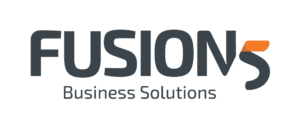In the new world of work, HR professionals face fresh challenges to bridging the gap between their relational and technical skill sets. In building and maintaining employee relationships, they must now quickly embrace new technology to maintain their momentum in terms of organisational effectiveness, lest they be left behind for lacking the technical capacity and know-how to support a modern workforce.
According to an HR Trends Report 2023 by McLean & Company, however, even among high-performing HR departments, “a proficiency gap remains between relational and technical skill sets.” The report goes on to explain how “successful HR digitization can be a differentiator between transactional HR and HR strategic business partnership.”
Cementing this strategic partnership is no easy feat. Here, we’ll discuss some of the top challenges HR departments face in 2023, and how utilising org chart features and functionality can immediately improve organisational efficiency and promote growth.
HR challenge: gain a comprehensive view of my entire organisation
Related HR priorities:
- Recruiting
- Developing leaders
- Recognising and retaining top performers
- Controlling labor costs
- Empowering diversity, equity, and inclusion (DEI)
- Streamlining data transparency and reporting
It’s difficult to make informed strategic business decisions without a holistic and drilled-down view of your corporate structure and the ability to manipulate this data in real time. From static technology to privacy and permissions issues, even today, HR professionals face myriad barriers to successfully understanding the makeup of their organisations. Perhaps you’ve faced some of these roadblocks at your own company:
Poor data quality
When inaccurate, incomplete, or inconsistent data goes in, incorrect decisions come out. Furthermore, poor data quality leads to reduced organisational efficiency and trust in the ability of others to gain meaningful insights into their workforce.
Inaccessible data silos
Whether due to technical limitations, data-security concerns, or ingrained corporate hierarchies, data silos present significant issues for both mid-size and large organisations. When departments, applications, and systems have their own data sets that aren’t integrated or accessible to the rest of the organisation, getting a holistic view of the organisation is difficult and resource-intensive.
Data integration issues
A huge headache and resource drain for IT departments, integration issues arise when systems store data in different file formats and/or data structures. Security and sensitive data concerns, such as GDPR or HIPAA compliance, can also limit integration. The bottom line — when different data sources, systems, and processes can’t speak to each other, HR departments can’t strategically consolidate and analyze the information to make strategic decisions.
Technical travails
Slow data processing times, limited data-storage capacity, and other technical limitations can wreak havoc on organisational efficiency and performance.
Closed organisational culture
Perhaps the most difficult challenge to overcome isn’t technical. An organisation’s culture can promote or limit HR’s ability to understand the makeup of its workforce. If there is a lack of trust between employees and HR, it can be difficult to gather accurate and complete information. Similarly, departments with competing budgets and needs may not be willing to share siloed data with the rest of the company.
Solution for growth: integrate and automate
Desired HR outcomes:
- Automate routine tasks
- Increase capacity to be more strategic
- Increase the frequency of data-driven decisions
- Reduce HR operations costs
- Decrease reliance on IT
To address these challenges, organisations should look for solutions that prioritise automation and easy integration. Employing a dynamic, cloud-based org chart is a great way to start!
From the get-go, you should look for an easy-to-deploy, web-based solution that gives you options for customising your org chart to meet the org’s needs. Smaller organisations may opt for a drag-and-drop interface or spreadsheet upload, while larger firms may choose to import data directly from their current HRIS.
Once your data is live, you’ll be able to get a full view of your entire organisation and drill down to various departments and individual employees’ data without logging into multiple systems. Some immediate advantages of a dynamic org chart include:
- Clarity of responsibilities and reporting lines
- Improved communication and collaboration
- Better resource allocation
- Facilitation of decision-making
- Increased transparency
- Improved succession planning
- Enhanced understanding of company culture
Not sure if organisational charting software will meet all of your needs? Request a consultation with an OrgChart expert.
HR challenge: understand how the future might affect my organisation
Related HR priorities:
- Recruiting
- Recognising and retaining top performers
- Controlling labor costs
- Empowering diversity, equity, and inclusion (DEI)
- Enabling innovation
- Streamlining data transparency and reporting
Whether they’re considering an acquisition or planning a reduction in force, management turns to HR to help facilitate change. To become a true, invaluable, and strategic business partner, however, innovative HR departments are doing more than executing the C-suite’s plan — they have a seat at the table crafting it. And even better news: In 2023, elevating the role of HR at your organisation is easier than you think.
Solution for growth: scenario planning
Desired HR outcomes:
- Increase capacity to be more strategic
- Increase the frequency of data-driven decisions
- Decrease reliance on IT
Building and analyzing an organisation’s future state before decisions are made — this functionality isn’t always associated with org chart software. But advancements and cloud computing make it possible for HR leaders to make hypothetical changes in real time and report findings to applicable stakeholders without affecting the company’s live org chart. Some scenario planning with org chart software efficiently enables:
- Data and information gathering on the current and future states of your workforce
- Input on outside variables that may impact the workforce, including economic indicators, technology, local conditions, and government regulations
- Input on internal variables that may impact the workforce, including employee skills, engagement, and DEI initiatives
- Action plan development and reporting, including recruitment and retention strategies, programs to upskill employees, and contingency plans for unexpected workforce disruptions, which proved extremely valuable during the pandemic
- Cross-department collaboration to integrate workforce considerations into the overall scenario-planning process

HR challenge: prepare my workforce to excel amidst change
Related HR priorities:
- Providing a great employee experience
- Recognising and retaining top performers
- Developing leaders
- Enabling learning and development
- Empowering DEI
- Enabling innovation
Learning and development opportunities have always been in HR’s purview. However, gone are the days when employees sit and watch endless videos and PowerPoint presentations. Today, technology plays a pivotal role in ensuring your employees have the knowledge and skills necessary to not just adapt, but excel, in today’s ever-changing environment.
Solution for growth: roll out modern training and learning technologies
Desired HR outcomes:
- Increase the priority of digital literacy in L&D efforts
- Reduce HR operations costs
- Decrease reliance on IT
It’s HR’s turn to be the hero. Give your workforce modern, customised learning and development offerings that they’ll want to complete. Org chart software is the perfect vehicle for planning, deploying, and automatically tracking your workforce’s skills. Here are some important steps for success:
- Assess training and development needs by conducting recurring audits of your current employees, looking for skill strengths and potential knowledge gaps. These audits can be conducted holistically, by department, or at the employee level, with the right org chart system.
- Evaluate technology options and resources that will help you design and develop modern training programs. E-learning, gamification, and virtual reality are possible ways to actively engage your employees.
- Implement and manage your L&D, ensuring the technology integrates with current systems and data analytics.
- Measure the results – what is working, and what can be modified? Keep an eye on continuous improvement, as technology makes it easy to keep L&D effective and relevant.
HR challenge: meet DEI goals and initiatives
Related HR priorities:
- Recruiting
- Recognising and retaining top performers
- Providing a great employee experience
- Developing leaders
- Enabling learning and development
- Empowering diversity, equity, and inclusion (DEI)
- Enabling innovation
- Streamlining data transparency and reporting
Among HR’s most critical priorities in 2023, Diversity, Equity, and Inclusion (DEI) initiatives have top billing in 2023. The programs, policies, and practices the HR department is responsible for include:
- Recruitment. Ensure key hiring practices that attract a diverse workforce are consistent across the organisation. This can include pay equity, representation in leadership positions, flexible work arrangements, and community outreach and engagement.
- Training: Prioritise unconscious bias training and awareness programs
- Employee wellbeing. Offer resource groups for underrepresented members of your workforce, and provide community outreach and engagement opportunities
- Business practices. Help the organisation support diverse businesses and attract diverse business partners.
Solution for growth: track, measure, and improve
Desired HR outcomes:
- Increase capacity to be more strategic
- Increase the frequency of data-driven decisions
- Increase the priority of digital literacy in L&D efforts
The only way you’ll know if your organisation is continuously improving is by utilising diversity and inclusion metrics to track progress and set priorities. A robust org chart solution should offer views where you can see the makeup of your organisation and departments, and even drill down across functional groups.
These metrics not only provide valuable insights for recruitment, training, and leadership development but also ensure management accountability to make DEI s priority.

HR challenge: keep up with compliance trends and requirements
Related HR priorities:
- Controlling labor costs
- Streamlining data transparency and reporting
Along with managing conflicts, ensuring compliance is one of the most challenging functions of HR. The ever-evolving legal landscape makes compliance time-consuming and complex. While laws and regulations vary by geography, industry, and organisation, some common requirements U.S. HR departments are responsible for include:
- Affirmative Action
- Employee Retirement Income Security Act (ERISA)
- Equal Employment Opportunity (EEO)
- Occupational Safety and Health Administration (OSHA) requirements
- Fair Labor Standards Act (FLSA) time and attendance requirements
Solution for growth: point-in-time reporting
Desired HR outcomes:
- Automate routine tasks
- Decrease reliance on IT
Point-in-time reporting is a game-changer for HR in terms of efficiently and effectively tracking and reporting compliance metrics over time. This functionality takes pre-scheduled “snapshots” of org chart data — attendance, turnover, job performance, etc. — in real time, typically on a weekly or monthly basis. HR then uses this information to ensure that compliance requirements are met. Other benefits of point-in-time reporting include:
- Improved accuracy. Due to regularly scheduled data collection, HR knows its records are always up-to-date.
- Improved visibility. HR departments now have a timely and comprehensive view of key compliance metrics, which they can then easily report and share with management and department leaders.
- Improved risk management. By regularly assessing compliance status, organisations can identify and address potential risks before they turn into bigger issues with costly penalties and fines.
- Promote a culture of accountability. Leaders are more likely to comply with requirements when they have an easy path to doing so. When compliance is an easy metric to measure, an organisation’s leaders can focus their time and resources on their core business objectives.





